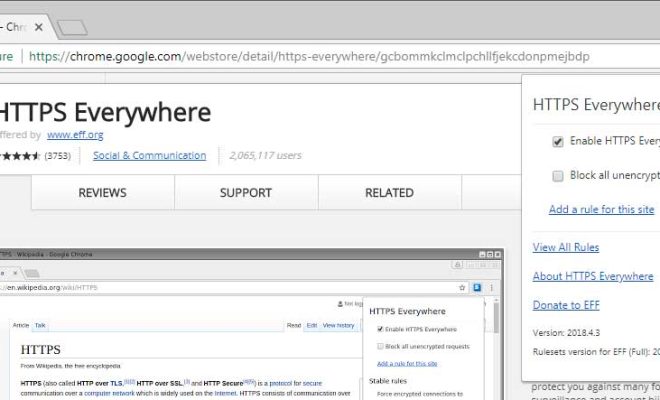HTTPS Everywhere Has Turned 10: Here’s What’s Changed and Why That Matters

HTTPS Everywhere, a browser extension that encrypts an internet user’s browsing data, recently celebrated its 10th anniversary. Launched in 2010 by the Electronic Frontier Foundation (EFF) and The Tor Project, HTTPS Everywhere has become an essential tool for protecting online privacy and enabling secure communication.
So, what has changed in the past decade, and why does it matter?
Firstly, HTTPS adoption has surged. In 2010, only a handful of websites used HTTPS encryption, but today, it has become the norm. According to a report by Mozilla, more than 80% of websites now use HTTPS by default. This is a significant improvement and is primarily due to the advocacy efforts of groups like EFF, Let’s Encrypt, and others.
However, while HTTPS adoption is impressive, it is not global. As the Internet Society’s 2020 report on the State of Encryption points out, only 20% of websites in Africa and 26.4% in Asia use HTTPS. Furthermore, many popular websites, including some major news outlets and social media sites, are yet to implement HTTPS or do not use it by default.
Secondly, HTTPS Everywhere has undergone significant improvements and updates over the past decade. The tool has evolved from a simple browser extension to a suite of technologies that enable secure communication over the internet. The latest version of HTTPS Everywhere, released in 2020, includes support for Transport Layer Security (TLS) 1.3, a more secure protocol for data exchange.
Moreover, HTTPS Everywhere now actively helps users avoid insecure websites that do not use HTTPS encryption. The tool identifies and blocks HTTP connections, warning users of the potential risks of using such sites.
Finally, HTTPS Everywhere has significantly contributed to advancing the user’s right to privacy on the internet. By encrypting internet traffic, HTTPS Everywhere helps to protect user data from being intercepted and manipulated by malicious actors. This is particularly crucial in light of increased government surveillance and online threats such as hacking, phishing, and identity theft.
In conclusion, HTTPS Everywhere’s 10th anniversary is a significant milestone in the fight for online privacy and security. The tool’s impact on promoting HTTPS adoption, improving internet security, and protecting user privacy is undeniable. However, there is still much work to be done to ensure that all websites implement HTTPS encryption by default and that users can enjoy secure and private internet communication





